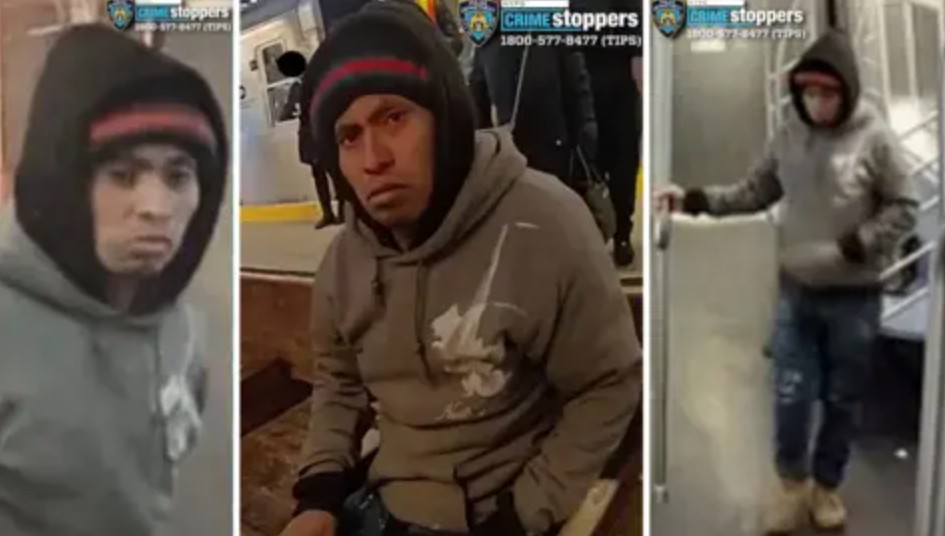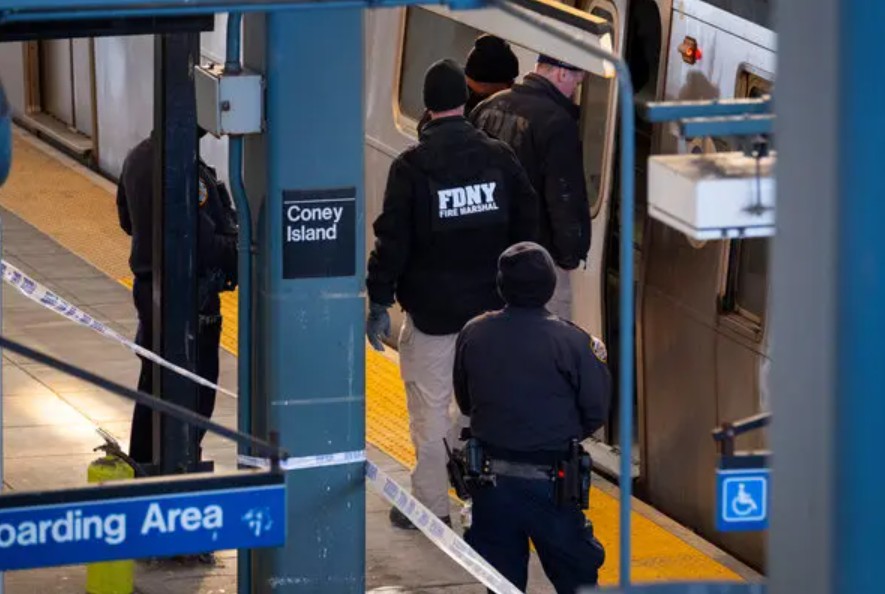Subway Woman Set on Fire Video and Attack Caught
Authorities acted quickly in response to this shocking crime, apprehending the suspect roughly eight hours after the attack at another subway station in Manhattan. The man, an immigrant from Guatemala, was taken into custody without resistance. Still, the horrific nature of the assault left both the public and law enforcement deeply shaken. Investigators believe the attacker and the victim were strangers, a detail that underscores the random and senseless brutality of the act.

This tragedy is not an isolated incident but part of a troubling pattern of violent episodes in the subway system that continually undermine passengers’ sense of safety. While the arrest eliminated the immediate danger, it reignited urgent debates about transit security and the effectiveness of existing safeguards. For both the community and officials, the incident has become a grim reminder that protecting commuters in one of the nation’s busiest transit networks remains a pressing challenge.
Contents
Video and Details of the Attack
On a chilling Sunday morning around 7:30 a.m., what began as an ordinary commute on the F train to Stillwell Avenue in Brooklyn turned into a horrifying scene. The suspect, later identified as a Guatemalan immigrant, targeted a woman in what police described as a disturbingly calm and deliberate assault. At first, authorities believed the woman may have been asleep when the attack began, but later clarified that she was motionless possibly unaware of the danger approaching.
Subway Woman Set on Fire Video Shocks Millions Worldwide
subway-woman-being-set-on-fire-video-1.mp4
subway-woman-being-set-on-fire-video-2.mp4
Without a word, the man approached and ignited the woman’s clothing with a lighter. Flames engulfed her within seconds, turning the subway car into a scene of chaos. Surveillance cameras later revealed the suspect sitting on a bench, watching as the victim burned a haunting image that underscored the sheer cruelty of the act.
Suspect Apprehension and Police Response
The suspect’s arrest was the result of swift police work combined with public vigilance. About eight hours after the assault, officers located him at a Manhattan subway station. The breakthrough came from body-worn camera footage, which provided clear images of the suspect. Once the NYPD released the photos, three high school students recognized him and immediately contacted authorities, enabling a rapid capture.
At a press briefing, NYPD Commissioner Jessica Tisch credited the critical role of body camera technology, while Chief of Transit Joseph Gulotta detailed the tactical operation that led to the arrest. Officers strategically stopped a train at Herald Square, sealed the subway doors, and conducted a systematic sweep before taking the suspect into custody. The operation highlighted not only the effectiveness of modern policing strategies but also the vital role of public cooperation in keeping the city safe.
While the arrest offered some relief, the brutal nature of the crime has left an enduring scar on the city’s conscience. Investigations remain ongoing, and charges are pending, but the case has already become a stark reminder of the vulnerabilities faced by commuters in public spaces.
Victim and Suspect Information
In the wake of the attack, officials have released little about the victim, choosing to protect her identity out of respect and privacy during the investigation. What is known is that she tragically lost her life in an unprovoked and deeply disturbing act of violence.
The suspect, an immigrant from Guatemala, is currently in custody as prosecutors prepare charges that reflect the heinous and deliberate nature of the crime. Given the brutality and the highly public setting in which it occurred, the legal process is expected to draw intense media attention and public scrutiny.
This case, both tragic and chilling, has forced the city to once again confront the fragility of public safety in its transit system and has renewed calls for stronger protections for the millions of commuters who rely on it each day.
Technological and Community Involvement
The role of surveillance technology in the rapid resolution of this case was critical. Security cameras in the subway system recorded the brutal act, giving law enforcement real-time evidence that was essential for identifying and locating the suspect. Additionally, footage from NYPD officers’ body-worn cameras provided key visual confirmation of the suspect’s identity and actions during the incident.

Equally important was the community’s involvement. Once the NYPD released the suspect’s images to the public, vigilant New Yorkers stepped in most notably three high school students who recognized him and promptly alerted authorities. This collaboration between technology and public participation demonstrates an effective model for addressing such incidents in urban environments.
NYPD Commissioner Jessica Tisch publicly praised the synergy between surveillance tools and community vigilance, stressing that both elements are indispensable to modern policing particularly in dense urban areas where public safety faces constant challenges.
Subway Safety Measures and Official Responses
The attack has prompted strong reactions from city leaders, who are acutely aware of how such violence impacts the public’s sense of safety on the subway. Both New York City Mayor Eric Adams and Governor Kathy Hochul condemned the attack, while also announcing immediate measures to strengthen transit security.
Governor Hochul ordered the deployment of 250 additional National Guard members to reinforce security across the subway system. This initiative is part of a broader plan to ensure that every subway car is equipped with working surveillance cameras measures intended not only to deter criminals but also to provide actionable evidence in the event of a crime.
Mayor Adams echoed the governor’s commitment, vowing swift justice for victims and a reinforced strategy to prevent violent crimes in transit hubs. He emphasized that the subway, as the lifeline of the city, must remain safe and secure for the millions who rely on it every day.
Together, the increased security presence and expanded surveillance technology form a comprehensive strategy to restore public confidence and protect commuters. These efforts aim both to prevent potential offenders from acting and to ensure swift intervention should an incident occur.
Broader Context of Subway Safety
This tragic attack serves as a stark reminder of the persistent safety challenges in New York’s subway system. Despite significant investments in security, violent crimes continue to raise concerns among residents and officials.
Government initiatives have shown progress. According to Governor Hochul’s office, overall crime in the subway system has dropped 10% since the rollout of a new safety plan in May, and 42% since January 2021. While these statistics point to improvement, high-profile violent incidents like this one reveal ongoing vulnerabilities that no city can ignore.
Compounding the concern, the same day as this attack saw another violent episode: a stabbing on a southbound 7 train at 61 St–Woodside station in Queens, which left one person dead and another injured. Together, these incidents illustrate the scale of challenges facing transit security not only preventing crime but also ensuring swift and effective responses when violence does occur.
The attack that left a woman engulfed in flames has shaken public confidence in subway safety. While overall crime is down, such horrific acts highlight the risks that persist within one of the world’s busiest metro systems. These events have renewed calls for action from both officials and the public.
Mayor Adams and Governor Hochul have responded firmly, reiterating their commitment to justice for victims and security for commuters. Deploying additional National Guard members and expanding surveillance are key steps in this strategy.
Yet, the true test lies ahead. Ensuring lasting subway safety requires more than law enforcement it depends on maintaining a visible security presence, fostering vigilance among commuters, and guaranteeing that every act of violence is met with decisive justice. The city’s commitment to these principles will shape the future of its transit system, and with coordinated efforts from officials, police, and the community, New York can move closer to a subway system that is not only safer but also trusted by all who use it.
Daily News -Kayla and Peach Original Video Unedited and Trending
Lily Lang Video and the Growing Crisis of Digital Harassment
New Orleans Mass Casualty Incident Caught on Bourbon
Bianca Censori Grammys Video and Bold Outfit Debate
Scarlett Johansson Viral Video and Unauthorized
Bri and Vale Twitter Video Sparks Debate on Privacy
Bonnie Blue World Record Video and Controversial

